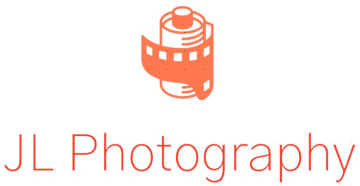The Cosmic Connection: Was Teotihuacan Aligned with the Stars?
I. Introduction
Teotihuacan, located in modern-day Mexico, stands as one of the most enigmatic ancient cities in the world. Known as the “City of the Gods” in Nahuatl, it was once a thriving metropolis, home to tens of thousands and a critical cultural hub in Mesoamerica. Centuries after its decline, it continues to captivate archaeologists, historians, and tourists alike.
One of Teotihuacan’s most fascinating aspects is its unique urban layout that seems to be imbued with celestial significance. This brings us into the realm of archaeoastronomy—the study of how ancient civilizations understood and incorporated astronomical phenomena into their structures. Could Teotihuacan have been designed as a cosmic map aligned with the stars? Throughout this blog, we’ll explore the evidence of the city’s connection to the cosmos, diving deep into its architectural design, astronomical alignments, and what they reveal about this once-great civilization.
II. Understanding Teotihuacan
A. Historical Context
Teotihuacan emerged around 100 BCE and flourished until approximately 550 CE. Located roughly 40 kilometers northeast of modern-day Mexico City in the Basin of Mexico, it was the largest city in the Americas during its peak, with a population estimated to be over 100,000 people.
The city’s origins and its builders remain a mystery. Though later civilizations like the Aztecs revered Teotihuacan, calling it “the place where gods were created,” it predated the Aztec Empire by nearly a millennium. Teotihuacan was a cultural and economic powerhouse in its prime, exerting influence across long distances. It was not only a center of trade but also of religion, art, and architecture that influenced Mesoamerican cultures for centuries.
B. Urban Planning and Layout
One of Teotihuacan’s most remarkable features is its meticulously planned grid-like layout, which covers an area of roughly 20 square kilometers. The city’s structured design was ahead of its time, demonstrating a high level of urban planning. The central axis of the city is dominated by the “Avenue of the Dead,” a broad, linear road stretching over four kilometers. It connects the city’s major landmarks, including the Pyramid of the Moon, Pyramid of the Sun, and the Temple of Quetzalcoatl (Feathered Serpent).
Teotihuacan’s primary structures follow hierarchical patterns, not random placement, suggesting intentional alignment. The Avenue of the Dead, in particular, seems to have been oriented according to celestial events. This points to the importance of both religion and astronomy in the city’s design.
III. Astronomical Alignments in Teotihuacan
A. The City’s Orientation
One of the peculiar aspects of Teotihuacan is its orientation. Instead of aligning directly with the cardinal directions (north, south, east, west), the city is oriented 15.5° east of true north. Scholars believe this was not arbitrary but served a deliberate astronomical or cosmological purpose.
This specific angle has ties to certain celestial events, such as the rising and setting of stars or the sun. It also overlaps with the Basin of Mexico’s geography, which may have had symbolic significance for Teotihuacan’s builders. Researchers posit that this orientation might relate to the sun’s motion and the cycles of agriculture, a critical foundation of Mesoamerican life.
B. Solar Alignments
At Teotihuacan, the sun appears to have played a central role in the city’s design. Evidence suggests that major structures, including the Pyramid of the Sun, align with solar events like the equinoxes and solstices. For instance, on the days of the equinox, the sunset aligns directly with the western façade of the Pyramid of the Sun. This alignment may have had calendrical and ceremonial significance, marking the changing of the seasons.
The shadow effects produced by structures during specific solar events further emphasize their astronomical purpose. For example, during the zenith passage of the sun (when it is directly overhead), the shadows vanish completely, which could have been a powerful moment of religious or symbolic meaning.
C. Stellar Alignments
Beyond the sun, Teotihuacan is thought to have significant connections to the stars. One prominent observation is its potential alignment with the Pleiades, a star cluster significant in numerous Mesoamerican mythologies. The city’s orientation might also reflect a relationship with Orion’s Belt, with some researchers suggesting that the three pyramids (of the Sun, Moon, and Temple of Quetzalcoatl) mirror the belt’s configuration.
These connections underscore the importance of astronomy in governing not only religious practices but also agriculture, timekeeping, and cultural rituals.
IV. The Pyramid of the Sun
A. Architectural Features
As the largest structure in Teotihuacan, the Pyramid of the Sun dominates the landscape. Measuring about 215 meters on each side and reaching a height of 65 meters, it is one of the largest pyramids in the ancient world. Its stepped design is reminiscent of other Mesoamerican pyramids, built to emulate sacred mountains.
Interestingly, a natural cave lies beneath the pyramid, which may have been a place of worship before the pyramid’s construction. This cave’s significance likely influenced the pyramid’s placement, adding a layer of cosmological meaning.
B. Astronomical Significance
The Pyramid of the Sun’s alignment with solar events strengthens the argument for its astronomical purpose. Its orientation allows for specific interactions with the sun’s path and zenith positions, suggesting it served as both a ritualistic structure and a tool for observing celestial cycles. This dual use—practical and symbolic—reflects the Mesoamerican worldview, which often intertwined religion and science.
V. Scientific Evidence
A. Archaeological Findings
Recent excavations have provided new insights into Teotihuacan’s relationship with astronomy. For instance, researchers have uncovered artifacts like ceramic figures and tools that may have been used in rituals tied to celestial events. Dating techniques indicate that construction aligned with these celestial observations began early in the city’s history.
B. Astronomical Calculations
Modern computer models have allowed scientists to analyze Teotihuacan’s potential connections to celestial phenomena with remarkable precision. Historical astronomical data, combined with cutting-edge technology, has lent credibility to many alignment theories, though debate persists due to the challenges of interpreting ancient intentions.
VI. Cultural and Religious Implications
A. Cosmological Beliefs
Mesoamericans saw the cosmos as an orderly, sacred structure governed by cycles of time. The scale and precision of Teotihuacan mirror this worldview. Celestial events like solstices may have marked key dates for religious ceremonies, agricultural cycles, and political authority.
B. Architectural Symbolism
Teotihuacan’s design represents a cosmic map. From sacred numbers like the base measurements of the pyramids to symbolic alignments such as the cardinal directions, the city’s structure may have embodied their conception of the universe.
VII. Alternative Theories
A. Different Interpretations
While many scholars support the astronomical alignment theories, others argue for alternative interpretations, such as trade networks or symbolic alignments reflecting political power rather than celestial events.
B. Challenges to Astronomical Alignment Theory
Skeptics assert that some alignments could occur by chance or as a result of the natural landscape. Mathematical probability and lack of explicit records from Teotihuacan’s builders continue to fuel debates.
VIII. Comparison with Other Ancient Sites
A. Similar Astronomical Alignments
Teotihuacan is not alone in its celestial orientation. The Pyramids of Giza in Egypt showcase alignments with Orion’s Belt, while Stonehenge operates as a solar calendar. These similarities may indicate independent discoveries of astronomical principles or potential cultural exchanges.
B. Global Context
Astronomical alignments in ancient structures demonstrate humanity’s universal fascination with the stars. From the Mayans to the Egyptians, ancient civilizations used these alignments to guide their societies.
IX. Modern Research and Discovery
A. Current Studies
Ongoing research at Teotihuacan employs technologies like LiDAR and ground-penetrating radar to uncover hidden structures and refine understanding of alignments.
B. Future Research Directions
Areas requiring further investigation include deciphering the purpose of the 15.5° orientation and exploring deeper layers of symbolism in the city’s design.
X. Impact on Understanding Ancient Civilizations
A. Archaeological Significance
Teotihuacan’s alignments reveal remarkable knowledge of astronomy, construction techniques, and social organization, illustrating the intellectual accomplishments of its builders.
B. Cultural Legacy
As one of the most studied archaeological sites, Teotihuacan continues to inform modern astronomy and architecture while inspiring efforts to preserve its cultural and historical value.
XI. Conclusion
Teotihuacan stands as a testament to humanity’s deep curiosity about its place in the cosmos. While much has been discovered about its astronomical alignments, many mysteries endure, inviting continued exploration. The study of Teotihuacan not only enriches our understanding of the past but also provides valuable lessons about the intersection of science, religion, and culture.

